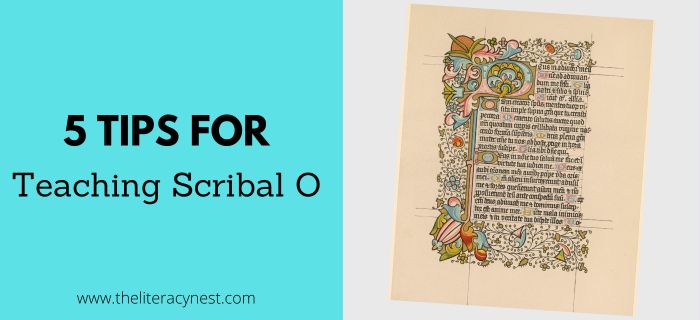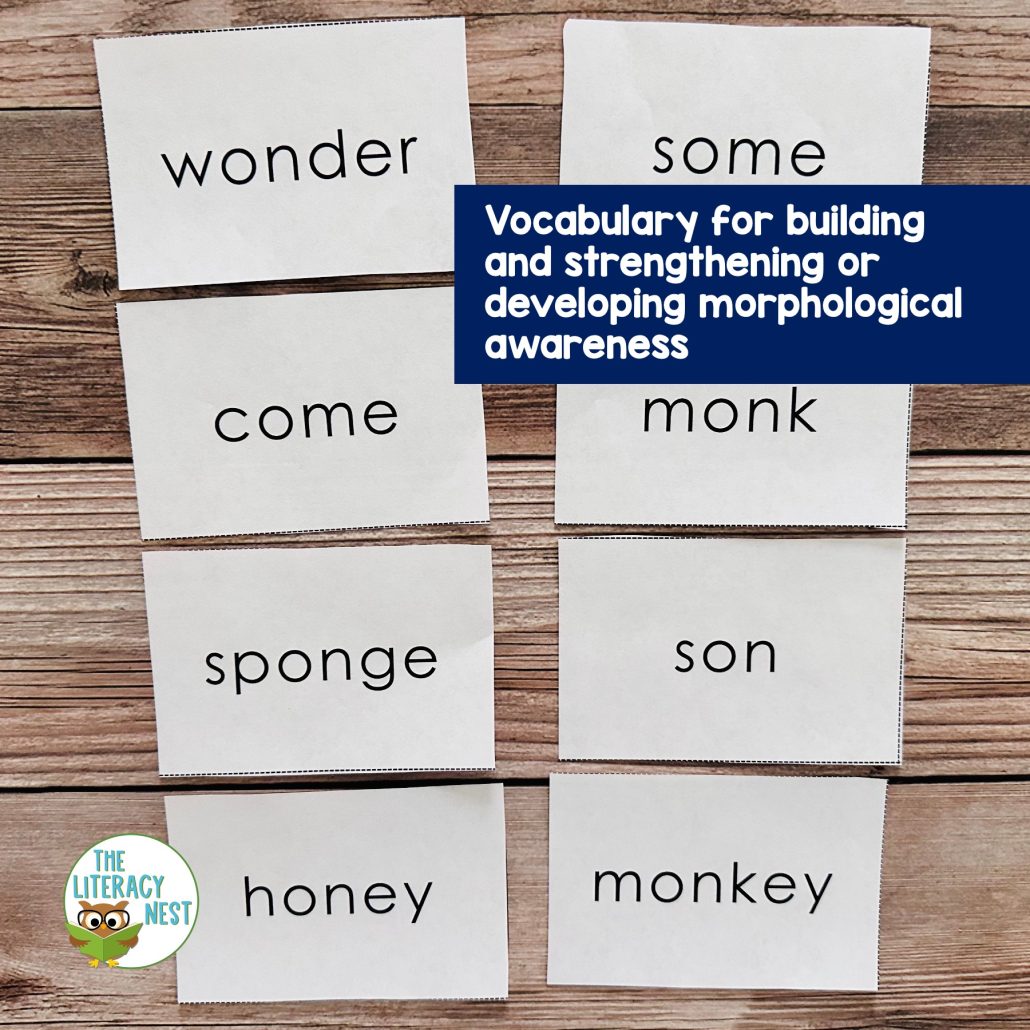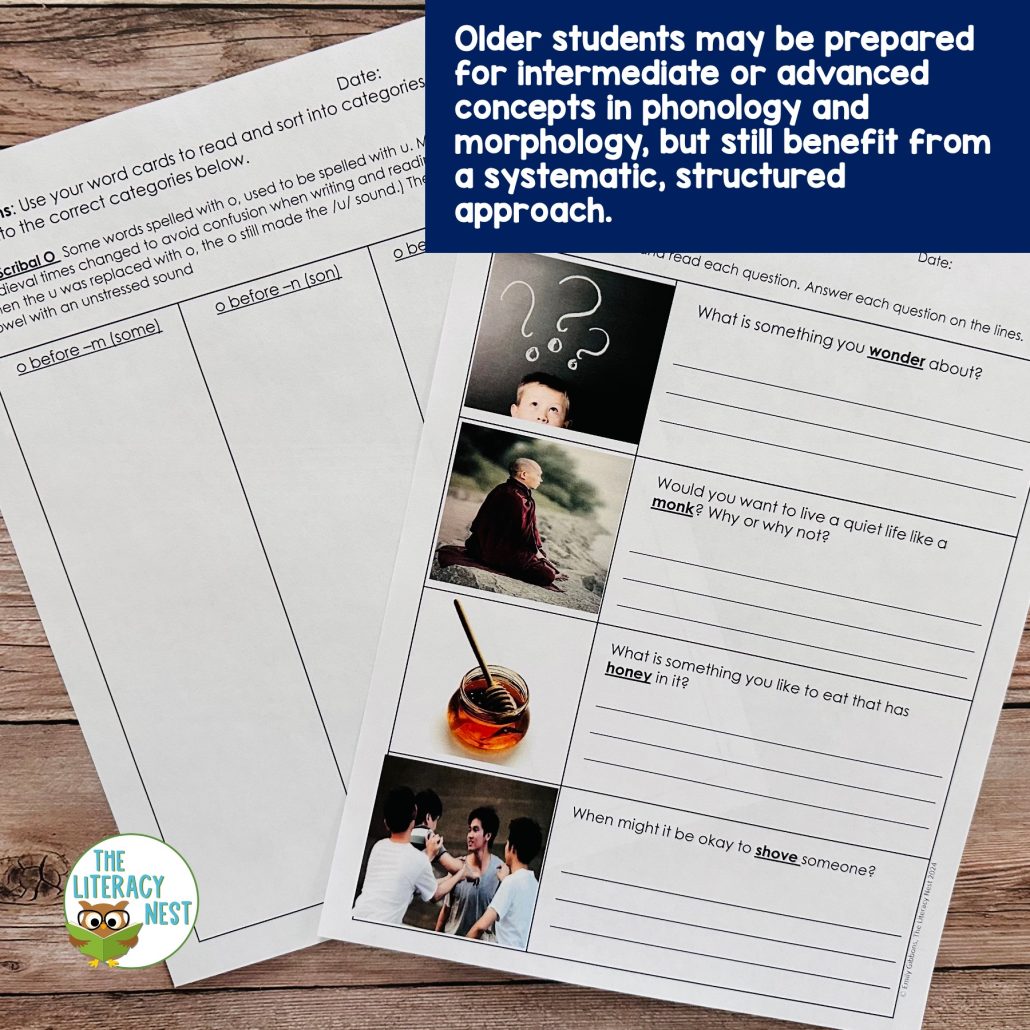5 Tips for Teaching Scribal O

Scribal o is a spelling convention with a fascinating historical story.
The History of Scribal O
Long ago, before the printing press was in common use, manuscripts were written by hand. The people who did this job were called scribes and many times they were monks.
The writing style popular at the time was comprised of primarily down strokes, called minims, making the difference between certain letters difficult to detect. This made reading the text very difficult. This was particularly a problem when letters with multiple down strokes were next to each other such as m, n, u, and v.
To solve this problem, scribes began substituting o for u in words where the u came before certain letters. This served to break up the numerous downstrokes and increase the readability. Although the spelling of these words changed, the pronunciation did not change. Even though these words were spelled with o, they were still pronounced with an /ŭ/ sound.

Students enjoy learning about scribal o for several reasons. They seem to enjoy the apparent whimsy with which changes like this were made. Students who are rule-oriented enjoy having a reason for spelling mysteries such as the word “love”. Lastly, students love being experts and knowing things that their parents don’t. This bit of historical knowledge allows students to be in the know.
Why Teach It?
Learning about scribal o is important because it makes a lot of irregular words more predictable. It is also an important part of developing a full understanding of schwa. Finally, the words to which this applies are high-use words such as some, come, son, month, money, and love.
Skills your students need to learn scribal o:
Scribal o is an advanced-level skill. I find it helpful if students are familiar with:
- syllable types,
- the -ve spelling pattern at the end of words,
- open syllable exceptions (such as when a makes a schwa sound at the beginning or end of words, as in Alaska),
- identifying accented syllables
- the appearance of schwa in an unaccented syllable
Learn more about how I teach schwa! Read How to Teach Schwa Vowels!
I will typically teach scribal o as an extension of common schwa patterns. Many of these words may be known as high-frequency words.
Here are Five Tips for Teaching Scribal O
1. Teach the history
As mentioned above, students love learning the history of scribal o. That makes the history a great place to begin! This video is a great tool to use.
2. Analysis
Analyze samples of historical documents to increase understanding of why this convention was helpful.
3. Start with what why know
Initially use learned words and more common words.
4. Identify and sort
Have students identify and sort by spelling pattern. What letter follows the o?
5. Writing Practice
Since this is a spelling rule, do lots of writing practice.
Further, build writing skills with sentence-expanding activities.
Advanced Orton-Gillingham Activities for Scribal O
Older students may be prepared for intermediate or advanced concepts in phonology and morphology, but still benefit from a systematic, structured phonetic approach. This resource focuses on 1-2 concepts at a time in isolation.
Practice multisyllabic words, reading comprehension, and writing skills with these resources designed to bolster language development. You will notice more written practice using sentence expansion in organized templates. There are also opportunities for reading comprehension practice with the controlled passage provided.
You can grab it at The Literacy Nest Shop.
Are you looking for professional development that will help you better support your students? The Literacy Nest has a membership for that…
Building Readers for Life Academy is a monthly membership program that empowers educators AND families. It dives into structured literacy and strategies for ALL learners. With BRFL Academy, you’ll learn what it takes to help EVERY student become a reader for life.
Join Building Readers for Life Academy today and pay just $1 for your first 30 days! Click here.










